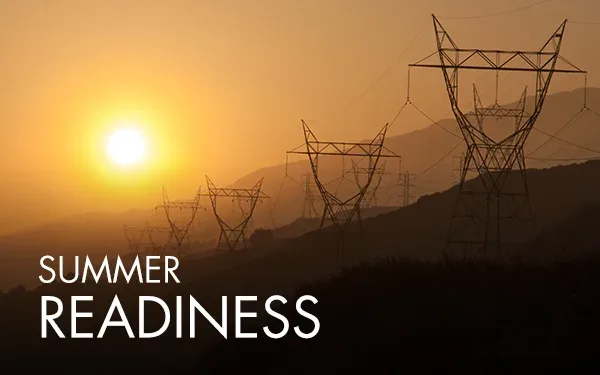Californians Do Conserve When Asked – Flex Alerts Are Vital


Flex Alerts work. They have been shown to help California conserve energy when the Independent System Operator anticipates a shortage of electricity to meet demand.
And if the program aimed at avoiding a more serious emergency through voluntary conservation efforts is used again this summer, a number of improvements should help it work even better.
For starters, more people are likely to be aware of Flex Alerts and their impact. That’s because the program now has $24 million to spend on a statewide advertising and public awareness campaign over the next two years because of action taken earlier this year by the California Public Utilities Commission.
Flex Alerts are also being upgraded this summer with sharper messaging and more recommendations for specific energy conservation steps consumers can take if summer heat causes the grid to be overly stressed.
“The Flex Alert program . . . is going to have a set of very distinct and very actionable messages that will be available to consumers so that they can also be a part of the reliability equation if we do indeed run into stressed grid conditions,” Elliot Mainzer, president and chief executive officer of the California Independent System operator, told a state legislative hearing in May.
“Flex will be significantly increased in terms of messaging and visibility and clarity of what we’ll be asking of consumers.”
Flex Alerts have been used in California since the energy crisis of 2000 and 2001. Before last summer, when a regional heat wave hit the Western U.S. and caused rotating outages for a brief period of time on Aug. 14 and 15, that was also the last time California experienced such outages due to demand for electricity outstripping supplies.
According to records kept by the ISO, California has had 112 Flex Alerts since the program began. When a Flex Alert was issued on Aug. 16, 2021, it reportedly led to 200-600 megawatts of conservation by consumers. From Aug. 17-19, when the outages had ended, consumers cut their energy use by an estimated 1,000 to 3,000 megawatts.
To put those savings in context, the state had almost 50,000 megawatts of electricity available during peak production last August. Savings from conservation may seem relatively small compared to overall capacity, but when grid stress is extreme, they can make a huge difference.
The Alerts are called by the ISO, typically a day before they are expected to be needed, but grid emergencies can also lead to a Flex Alert with little or no advance warning. When a Flex Alert is issued, Californians are asked to shift their energy use as much as possible to the morning and early afternoon hours. On the morning before a Flex Alert, consumers are asked to:
- Pre-cool their homes by lowering air conditioning thermostats to 72 degrees;
- Close blinds and drapes to keep the sun from heating up the home;
- Turn off unnecessary lights;
- Use dishwashers, washing machines and other major appliances;
- Set pool pumps to run early in the morning;
- Charge mobile devices and laptops;
- Charge electric vehicles.
During the actual Flex Alert, when conservation is most needed, consumers are asked to:
- Set air conditioner thermostats to 78 degrees, if health permits;
- Avoid using dishwashers, washers, dryers, and ovens;
- Turn off unnecessary lights;
- Unplug or turn off electrical devices that you are not using;
- Keep blinds and drapes closed to prevent the sun from heating up the home;
- Use fans when possible.
The state’s large investor-owned utilities—Pacific Gas and Electric Co., Southern California Edison Co., and San Diego Gas and Electric Co.—are responsible for determining the location and duration of the rotating outages in their service areas to avoid collapse of the grid and power being out for longer and over a larger area.
Asked during a recent legislative committee hearing how the ISO avoided outages in a similar regional heat wave last September after needing them in August, Mainzer said conservation was a big part of the story.
“As temperatures continued to be very, very hot across the balance of August and Labor Day weekend, there was just a significant mobilization of communication coordination and a significant demand response effort,” he said. “The efforts that industry and consumers made to help conserve power over what continued to be extremely hot days were real difference makers.”
Consumers are encouraged to sign-up to receive an email notification when a Flex Alert is issued. Flex Alerts are also sent through the ISO Today mobile app, Twitter, Facebook, and promoted on the ISO’s website at www.caiso.com. The ISO also notifies the media to help increase awareness of the Flex Alert.

